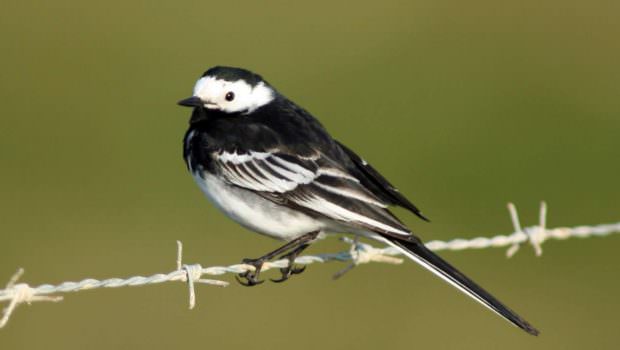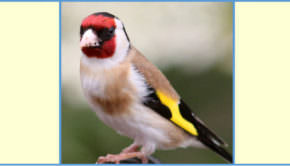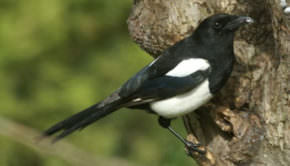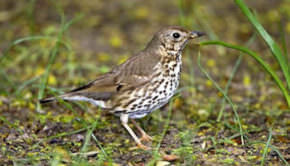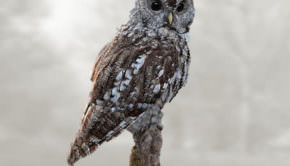Biodiversity Group Bird of the Month: The Pied Wagtail
The pied wagtail is a small, long tailed black and white bird which can be seen dashing about over lawns or car parks in search of food. During the winter, at dusk, they flock together at warm roost sites like reed beds and sewage works or trees and bushes in city centres. Warm places are hard to find so they are happy to share especially as there is the added bonus of safety in numbers. These roost sites also act as an information exchange. Birds having difficulty finding food simply follow the ones that are in better condition in the morning! They nest from April onwards and the males are very territorial at this time even attacking their own reflections in wing mirrors and hubcaps of parked cars. The female alone builds the small cup shaped nest out of grass and mosses in ivy, holes in walls, under roofs or even in old nests of larger birds. She then lays 3 – 7 pale grey eggs and incubates them. After about 14 days the eggs hatch and both birds feed the young who fledge after 13 – 16 days. At this stage the juveniles are brownish-grey and often tinged with yellow. Wagtails eat insects but will feed on seeds and even rubbish in the winter. When catching prey in flight they zig-zag, tumble and circle using their tails as a rudder. No one is quite sure why they constantly wag their tails but amongst the suggestions are; a way of signalling to others, to flush out insects or as camouflage when hunting next to flowing water and riverside vegetation. Pied wagtails along with their cousins the white wagtail are the most widespread breeding birds in Europe, breeding everywhere from Iceland and arctic Norway south to Andalucía and Sicily. Such widespread breeding is an indication of this wagtail’s adaptability, for it is just as happy in high mountain valleys as city centres. Pied wagtails are on the green list of birds not endangered.
Did You Know?
- Other names for the pied wagtail include Polly washdish, dishwasher, Penny wagtail, water wagtail.
- The biggest wagtail roosts may have as many as 4,000 birds.
- Buckingham Palace supports a wagtail roost.
- On average during the winter daylight hours they eat a small item of prey every 3 – 4 seconds
- Though the pied wagtails in southern Britain are largely sedentary, northern populations migrate considerable distances.
Many thanks to www.gardenbirdwatching.com for use of Wagtail picture.

